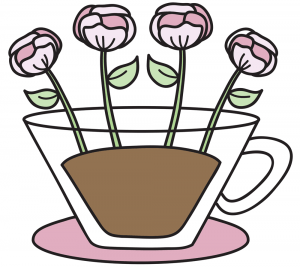
Blooming
The widespread practice of pre-wetting pour-overs with a small amount of brew water is referred to as blooming. The name is derived from how the coffee appears to expand, resembling a flower opening up. The blooming effect is exaggerated in fresher and darker roasts, which have had less time to degas or contain more roasting gas. Most baristas tend to add a quantity of water between two and three times the weight of their dose to the grinds for the bloom. If you use less than twice the amount of water, you will struggle to stretch the water far enough to wet all the grinds and you risk having some dry clumps in the coffee bed. If you use more than three times the weight of your grinds, all the processes involved in extracting the coffee will be triggered at a much faster rate. Extraction is a product of diffusion and flow, so with more water you create more of both of these. We explore both these subject in detail in our Advanced Coffee Making Course.
As the water begins to envelope and saturate the coffee grinds, roasting gases begin to form bubbles, which makes the coffee grinds appear to expand in size. Blooming is not an essential part of producing a good coffee, but it can help to make sure all the grinds are wet, using a small amount of water.
When brewing coffee, a high level of extraction occurs immediately at the surface of the grinds. We call this surface extraction. The internal extraction of grinds is unlikely to advance very far during the blooming phase, but surface extraction takes place from the moment hot water comes in contact with the coffee. For this reason, it is important to bloom your coffee in a very consistent way.
The use of your spoon or spatula when folding in grind particles should be standardised to a specific number of stirs. One approach we recommend is to stir the coffee from a range of directions; first from the north,